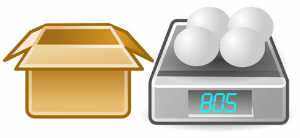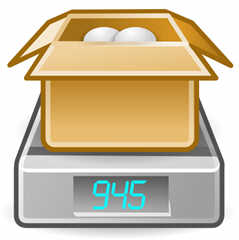Chance
Online games
Time
Choose 5 times. Record.
*Can you order the times? (earliest to latest)
*Can you record the times in different way
1. Record your times in words?
2. Record your times on an analog clock
3. Record your times on a digital clock
4. Record your times in 24hr time
Needs to be completed by friday lesson, plus
worksheet and glue into book.
Worksheet Examples
Remember read example page. Complete 2 worksheets. You may use calculator for conversions.
Example
Page 1
Question 1
To convert 1 min to seconds
There are 60 seconds in 1 min
1 x 60 = 60 seconds
To convert 4 min to seconds would be
4 x 60 = 240 seconds
Question 2
This one is a two step conversion
convert 28 days to fortnight
28 / 7/2 = 2 fortnights
Another way
You know 7 days in a week
28 days convert to weeks
(28/7= 4 weeks)
You know 2 weeks to a fortnight
(4/2 = 2 fortnight)
Therefore 28 days equals 2 fortnights.
Question 3
Simple conversion using decimal or fractio
1.5 hour to minutes = 1.5 X 60 = 90 minutes
Question 4
Two step conversion using fraction or decimal
Convert 15 months to weeks
15 months = 1 3/12 years
= 1 1/4 years
Convert to weeks
1 1/4 years= 52 + ( 1/4 of 52)
= 52 + 13
= 65 weeks
Question 5 & 6 challenges
Try your best
http://west.cdn.mathletics.com/IWB/Book/2569/131437008.H_Time_Calculations_p28-p29.pdf
3D SHAPE Assessment Review
- Identify face, vertex, apex, edges and curved surface
- Know how many faces, vertices, edges and pair of parallel faces, in 3D objects
- Know the differences and similarities between pyramids and prisms
- Understand how to draw some 3D objects (check out videos)
- Understand the cross sections of 3D objects



Try drawing 3D shapes
sphere, cone, cylinder, cube,
https://www.youtube.com/watch?v=ucAUQsOWQY0
pyramid and prism
https://www.youtube.com/watch?v=ESYL41y6RjY&t=153s
Cross- Sections of 3D shape
https://www.geogebra.org/b/XCZwsytr
Net 3D shape
https://www.geogebra.org/m/fuqrmxQy
What did you notice about the 3D objects and their nets?
What is a common feature of all of the nets of 3D objects?
What is the difference between the net of a cube and the net of a rectangular prism?
Explore nets of a cube
https://illuminations.nctm.org/Activity.aspx?id=3544
How many different nets for a cube could you make in the last activity?
2D Shape
3D SHAPE Assessment Review
- Identify face, vertex, apex, edges and curved surface
- Know how many faces, vertices, edges and pair of parallel faces, in 3D objects
- Know the differences and similarities between pyramids and prisms
- Understand how to draw some 3D objects (check out videos)
- Understand the cross sections of 3D objects


Try drawing 3D shapes
sphere, cone, cylinder, cube,
https://www.youtube.com/watch?v=ucAUQsOWQY0
pyramid and prism
https://www.youtube.com/watch?v=ESYL41y6RjY&t=153s
Cross- Sections of 3D shape
https://www.geogebra.org/b/XCZwsytr
Net 3D shape
https://www.geogebra.org/m/fuqrmxQy
What did you notice about the 3D objects and their nets?
What is a common feature of all of the nets of 3D objects?
What is the difference between the net of a cube and the net of a rectangular prism?
Explore nets of a cube
https://illuminations.nctm.org/Activity.aspx?id=3544
How many different nets for a cube could you make in the last activity?
2D Shape
Lesson Thursday 3/8
Warm Up
- What are horizontal, vertical and parallel lines? Draw each one.
- Identify the shape, the number of sides and vertices on the following shapes.
- What is the difference between a 2D shape and a 3D object?
- What are the 3 types of triangles and the quadrilaterals you know of? Also, draw a hexagon
Body:
1. Get four pieces of paper between two of you
2. Cut the papers into four triangles. One of them being a scalene, isosceles, right angle and equilateral.
3. Check with a protractor to check your angles and ruler to measure your sides.
4. Inside each one, name its properties (that is, what makes each triangle a scalene, isosceles etc)
5. Explain how each triangle named above can be either an acute angled triangle, a right angled triangle or an obtuse angled triangle. (e.g. an equilateral triangle can be also be a _______
6. Measure all the angles inside your triangle with a protractor and see for yourself what all the angles added together equal. Compare with a friend. What do you notice?
Extension
Extension 2: Early early finishers: Explore trigonometry https://www.mathsisfun.com/algebra/trigonometry.html and do the questions http://www.staff.vu.edu.au/mcaonline/units/trig/ratios.html
Polygons
Friday 3/8
WALT: Identify and classify two dimensional shapes.
What is a polygon?
A plane figure with at least three straight sides and angles, and typically five or more.
What is an irregular polygon?
A polygon that does not have all sides equal and all angles equal.
Warm Up:
Draw a regular hexagon and an irregular hexagon. Do the same for a quadrilateral, pentagon and octagon. What did you notice?
Body:
Task 1
Do small quiz polygon pop quiz page 1. http://west.cdn.mathletics.com/IWB/Book/67/93322369.G_geometry_student_p7-p15.pdf
(Copy below)
Go the following website to help you: http://www.mathsisfun.com/geometry/polygons.html
(Copy below)
Go the following website to help you: http://www.mathsisfun.com/geometry/polygons.html
Task 2:
Complete drawing regular and irregular work sheet (page 2) from http://west.cdn.mathletics.com/IWB/Book/67/93322369.G_geometry_student_p7-p15.pdf
Extension:
Translate, rotate and reflect
Thursday 17/8
WALT: Understand what translate, rotate and reflect mean.
These will require a Chrome book or a laptop.
Do 3 questions of each section with the whole class and then let them explore on their own. Those who want, can stay with the teacher.
1. (Reflection) Go to http://www.mathsisfun.com/geometry/reflection.html, read it and then do the questions at the bottom.
2. (Rotation) Go to http://www.mathsisfun.com/geometry/rotation.html and do the 10 questions at the bottom.
3. (Translation) Go to http://www.mathsisfun.com/geometry/translation.html and do the 10 questions at the bottom.
Task 2:
Do pages from Mathletics booklet
EXT: When you have finished complete
Rotational Symmetry
Thursday 24/8
WALT: Understand rotational symmetry
Warm Up: Go through the website https://www.mathsisfun.com/geometry/symmetry-rotational.html
Get students to write down some definitions.
to emphasise the point.
Task 1: go to and do the questions below
Task 2: Go to the website and play the game
Task 3: Draw and cut 2 shapes that have two different sets of rotational symmetry. You may try and be creative.
Task 4: watch the videos on http://www.onlinemathlearning.com/rotational-symmetry.html
Friday 25/8
WALT: Understand how to enlarge shapes and create tessellation patterns
Enlargement
Go through the SNB slides and the website http://www.mathsisfun.com/geometry/resizing.html to teach students.
Task 1:
In maths book students to draw the following shapes:
-Square with sides 3cm (increase by 2 times)
- Rectangle with sides 6cm and 3cm (halve the size)
- Equilateral triangle with sides 4cm (double the size)
Task 2
Do the enlargement task on worksheet
Task 3 Complete grid on website https://www.mangahigh.com/en-au/maths_games/shape/transformations/enlargement_on_a_grid
Task 3 Complete grid on website https://www.mangahigh.com/en-au/maths_games/shape/transformations/enlargement_on_a_grid
Tessellation
Go through the SNB slides and the website https://www.mathsisfun.com/geometry/tessellation.html to teach students.
Task 1
Students complete mathletic worksheet page 5 http://west.cdn.mathletics.com/IWB/Book/67/93322369.G_geometry_student_p16-p24.pdf
Task 2
Students create their own tessellation pattern
Circles
Thursday 31/8
WALT: Students learn to identify and names parts of circles to include: centre, radius, diameter, circumference, sector, semicircle and quadrant.
Go through the sections using the website https://www.det.nsw.edu.au/eppcontent/glossary/app/resource/factsheet/4025.pdf
As class
- Students draw a circle in their maths book.
- The centre of a circle is a fixed point in the middle of the circle. The distance from the centre of a circle to any point on the circumference of the circle is always the same. Label the centre point M.
- The circumference of a circle is the edge or perimeter of the circle.Trace the circumference with a red pen.
- The radius of a circle is a straight line that has one endpoint on the centre of the circle and the other endpoint on the circumference of the circle. Draw the radius with a blue pen.
- The diameter of a circle is a straight line that passes through the centre of the circle and has both endpoints on the circumference of the circle.The diameter of a circle is twice as long as the radius of the circle. Draw the diameter with a green pen.
- Semicircle is half a circle. Shade in a semicircle
- Sector is the portion of a disk enclosed by two radii and an arc. Draw a sector.
- Quadrant is A quarter of a circle (made by two radius's at right angles and the connecting arc). Shade in a quadrant using a different colour.
- The chord of a circle is a straight line that has both endpoints on the circumference of the circle. Draw a chord with a black pen
Students have time to revise 2d shape and ask the teacher questions.
Area
Area of Rectangle/ Square
How can we calculate the area?
By counting the squares
By skip counting to match the numbers of rows or columns
By using the formula area= length x width
This example Area= 3 x 5 = 15 squares
Practise these ones in your book
Area of Parallelogram
Area of parallelogram is same as rectangle and is the length multiplied by the width.
Area of Compound Shape
Break the shape into smaller shapes.
Try these ones
Area of Triangle
A triangle is half a rectangle . To find the area of a triangle you need to find the area of the rectangle then divide by 2.
Area Triangle = base length x height x 1/2
Extension:
Hectare
Mass
Appropriate Units of Mass
Milligram (mg) Eyelash and hair.
•Gram (g) 1000mg : Sugar, salt and pepper.
•Ounce (Oz) 28g : Equivalent to 28 grams.
•Pound (Ib) 453g: Equivalent to 453g
•Kilogram (kg) 1000g :Bag of potatoes or carrots.
•Stone (st) 6kg: Equivalent to 6 kilograms.
•Tonne (T) 1000kg : Cars and trucks.
Gross and Net Mass
Gross mass: The total weight, including the contents and the packaging.

To find the mass of the packaging: gross mass – net mass.
To find the net mass: mass of the packaging – gross mass.
Converting units of mass
Watch the following video
Remember
Watch the followings
Converting kilogram to gram
https://www.youtube.com/watch?v=vVnrvxWYKog
Converting grams to kilograms
https://www.youtube.com/watch?v=vVnrvxWYKog
Converting grams to kilograms
https://www.youtube.com/watch?v=AY1heUpO9PE
Converting tonnes and kilograms
https://www.youtube.com/watch?v=o-JQoM5Dl_k

Converting tonnes and kilograms
https://www.youtube.com/watch?v=o-JQoM5Dl_k
Answers












No comments:
Post a Comment